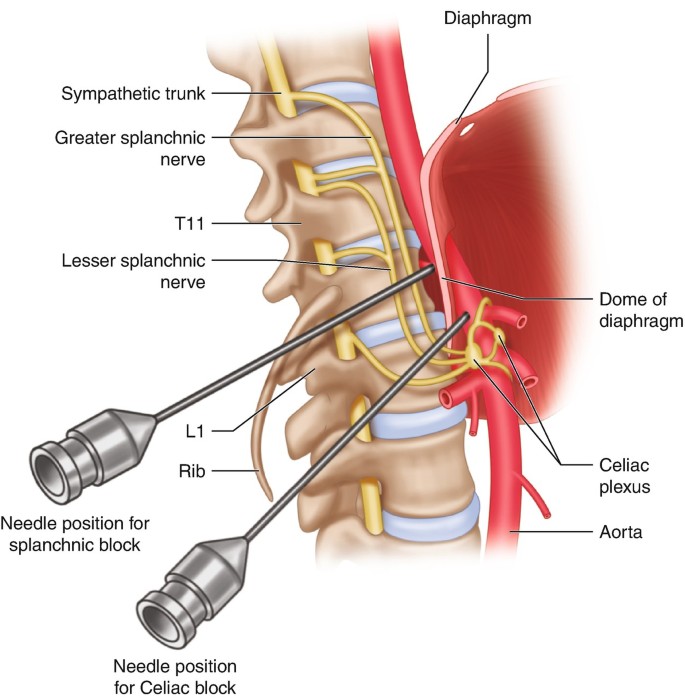
Celiac Plexus Block (Pain Management Procedure)
Headed by Dr. Hemaxi Ambani
WHAT IS CELIAC PLEXUS BLOCK ?
A celiac plexus block is a procedure aimed at providing pain relief through injection. It works by preventing the celiac plexus nerves from transmitting pain signals to the brain. This type of procedure falls under the category of nerve blocks.
WHAT DOES CELIAC PLEXUS BLOCK TREAT ?
A celiac plexus block is used to alleviate severe abdominal pain caused by conditions like pancreatic cancer or chronic pancreatitis. These conditions often result in intense pain due to pressure on the celiac plexus nerves.
Difference Between Celiac Plexus Block and Neurolytic Celiac Plexus Block (Neurolysis):
Celiac Plexus Block: In this procedure, steroids or an anesthetic are injected into the nerves to provide temporary pain relief. It is typically used for conditions like pancreatitis.
Neurolytic Celiac Plexus Block (Neurolysis):This procedure involves permanently damaging the celiac plexus nerves by injecting substances like ethanol or phenol. This prevents the nerves from transmitting pain signals to the brain. It's often recommended for pancreatic cancer.
PROCEDURE DETAILS
When will I have a celiac plexus block?
A celiac plexus block is often performed as an outpatient procedure to manage pain. It can be scheduled at any point during treatment for pancreatic cancer, and it may also be done during surgery or an endoscopic ultrasound.
HOW SHOULD PREPARE FOR CELIAC PLEXUS BLOCK ?
Before the procedure, follow your doctor instructions, which may include:
- Stopping certain medications like blood thinners.
- Fasting before the procedure.
- Limiting alcohol and quitting smoking.
WHAT HAPPENS DURING CELIAC PLEXUS BLOCK
During the procedure:
- You lie down on your stomach or back.
- The area is sterilized, numbed, and injected with contrast dye.
- Using imaging scans for guidance, a needle is inserted into the back and medication is injected into the celiac plexus.
WHAT HAPPENS AFTER CELIAC PLEXUS BLOCK
After the procedure, most people experience pain relief within 15 to 30 minutes. You’ll be monitored for a while to ensure there are no complications. Potential side effects include bruising, swelling, soreness, infection, diarrhea, and low blood pressure.
What are the Potential Risks or Complications? Complications are rare but may include allergic reactions, decreased blood flow to the spinal cord, delayed stomach emptying, organ damage, nerve damage, or paralysis.
What are the Benefits? A celiac plexus block can significantly alleviate abdominal pain caused by conditions like pancreatic cancer or pancreatitis, reducing reliance on strong pain medications and improving quality of life.
RECOVERY & OUTLOOK
What is Recovery Like After a Celiac Plexus Block? Most people resume normal activities within 24 to 48 hours after the procedure, avoiding strenuous activities for the first 24 hours.
How Long Does Pain Relief Last? Pain relief varies, but most people experience relief for 3 to 6 months. Additional blocks may be needed if pain returns. A neurolytic block provides long-term pain relief, often eliminating the need for further treatments.

